この記事は英語のみで書かれています。
This article is written in English only.
Updated: July 7
The Fossa Magna Museum and Fossa Magna Park are located in separate places. Visiting both will take some time, so please plan accordingly.
See the Geological Boundary Between Eastern and Western Japan with Your Own Eyes!
In this park, explanations are written in both Japanese and English. ↓
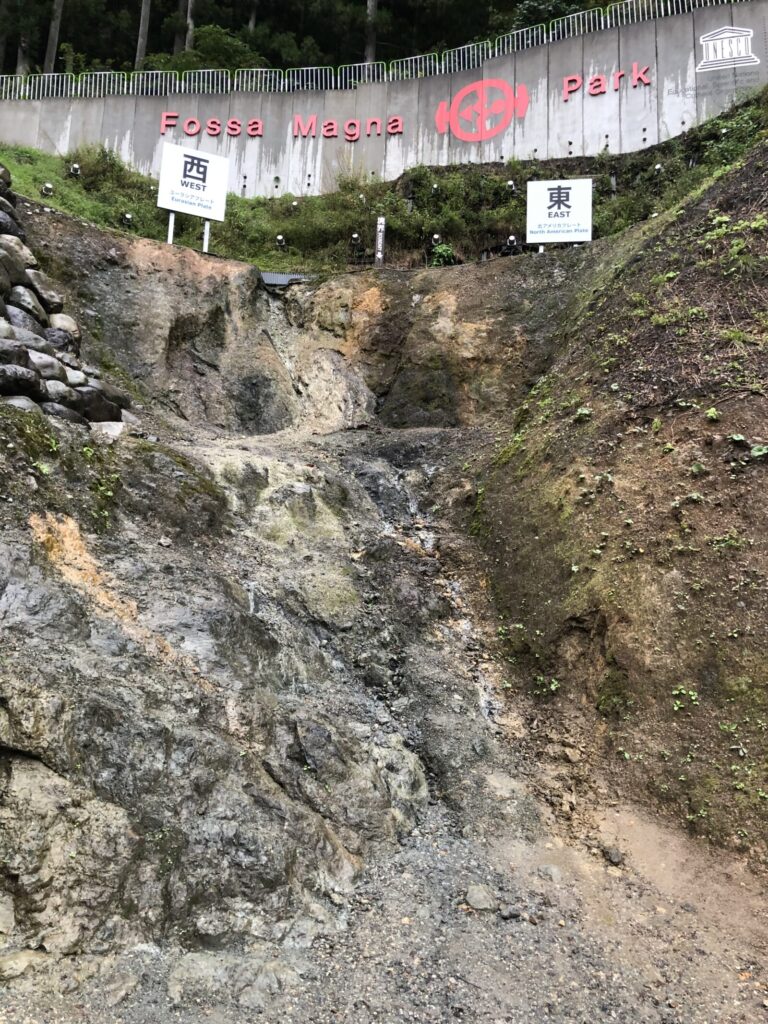
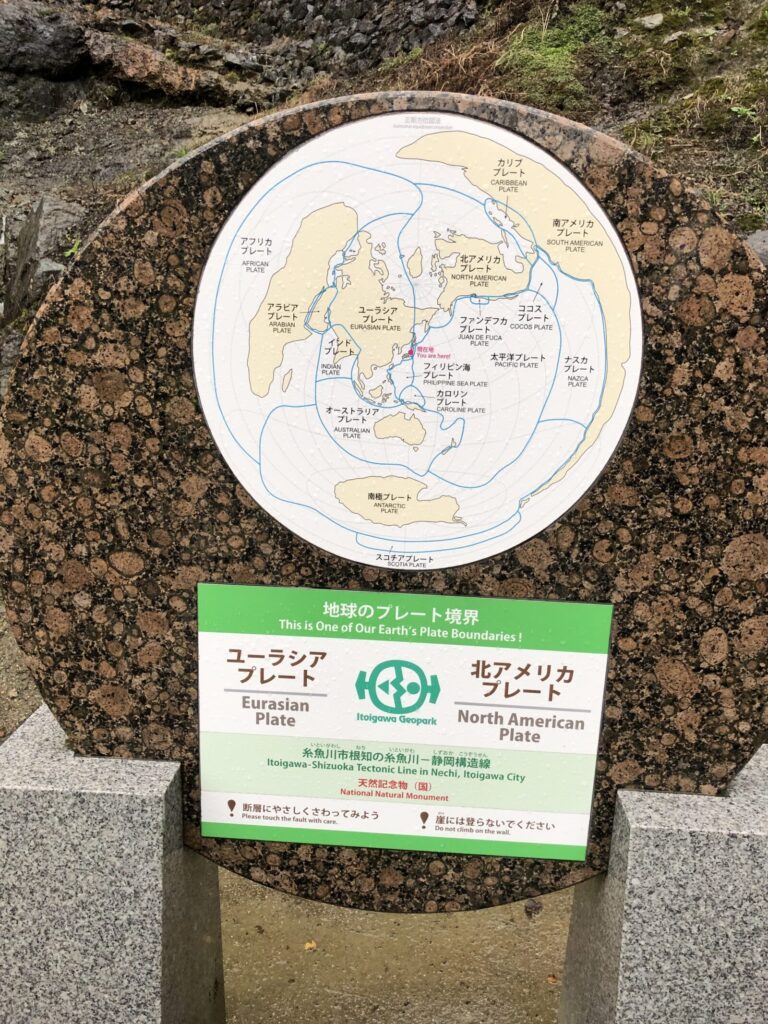
Fossa Magna Park in Itoigawa City(糸魚川市), Niigata Prefecture(新潟県), offers a rare opportunity to witness the geological boundary between eastern and western Japan. This site is globally significant, and you can view the fault plane safely. Even small children can join the hike, and the contrast between the two geological formations is easy to see.
What is Fossa Magna?
Fossa Magna(フォッサマグナ) means “great rift” in Latin. It was named by German geologist Dr. Naumann during the Meiji era. Geologically, it marks the divide between Northeastern and Southwestern Japan and stretches through the Itoigawa-Shizuoka Tectonic Line(糸魚川ー静岡構造線). This major fault line runs from Itoigawa(糸魚川) through Himegawa(姫川), Lake Suwa(諏訪湖), the Kamanashi River(釜無川), Fuji River(富士川), and down to Shizuoka(静岡). The area consists of newer strata formed about 20 million years ago deposited in a trench of much older rocks that are 100 to 300 million years old.
At Fossa Magna, two entirely different geological eras collide. Usually, such geological boundaries are hidden underground, but in Itoigawa’s Omachi district, they are exposed and accessible.
Visiting Fossa Magna Park: A Family-Friendly Fault-Viewing Hike
Fossa Magna
means “great gulf” in Latin. It was discovered and named by Dr. Naumann, a German geologist who came to Japan during the Meiji era. The Fossa Magna is an accumulation of newer strata formed 20 million years ago and later in a trench of older rocks formed more than 100 to 300 million years ago that stretches from the Sea of Japan to the Pacific Ocean.
「糸魚川世界ユネスコジオパーク」のサイトより引用
Fossa Magna Park is a special place where the Itoigawa-Shizuoka Tectonic Line (糸魚川ー静岡構造線)has been artificially exposed and made walkable. Even children can climb the path with their parents. The fault fracture zone shows two distinct types of rocks:
- East side (right): ~16 million years old
- West side (left): ~270 million years old
The difference in color and texture is clearly visible. The site was renovated in 2018 with clean, easy-to-read signs.
Plan Your Visit
To fully enjoy the experience, it’s recommended to start at the Fossa Magna Museum, located a short drive from the park. The museum is full of geological exhibits and can take 2 to 3 hours to explore.
From the museum, it takes about 20 minutes by car to reach the Fossa Magna Park parking lot. Public restrooms are available nearby and were well-maintained during my visit.
From the parking lot, follow the road to the mountain entrance. The main path is paved but steep. There’s an alternative sloped route, though its entrance is a bit farther away. The trail through the woods is narrow in places, so it’s best to hold children’s hands.
As you walk slowly up the path, the cross section of the geological layers begins to appear — a breathtaking moment! To get closer to the actual fault line, you’ll descend a long staircase. There are additional points of interest beyond, but I had to turn back as dusk approached.
Final Thoughts
Fossa Magna Park is a unique, educational, and family-friendly destination perfect for geology lovers, photographers, or curious travelers. Don’t forget your walking shoes and camera!
What to Bring for Your Visit 🧵
Before heading to Fossa Magna Park, make sure you’re prepared for a light hike through forested terrain. Here are a few essentials:
🧴 Bug Repellent – Especially in warmer seasons.Have a great trip! (^^)/
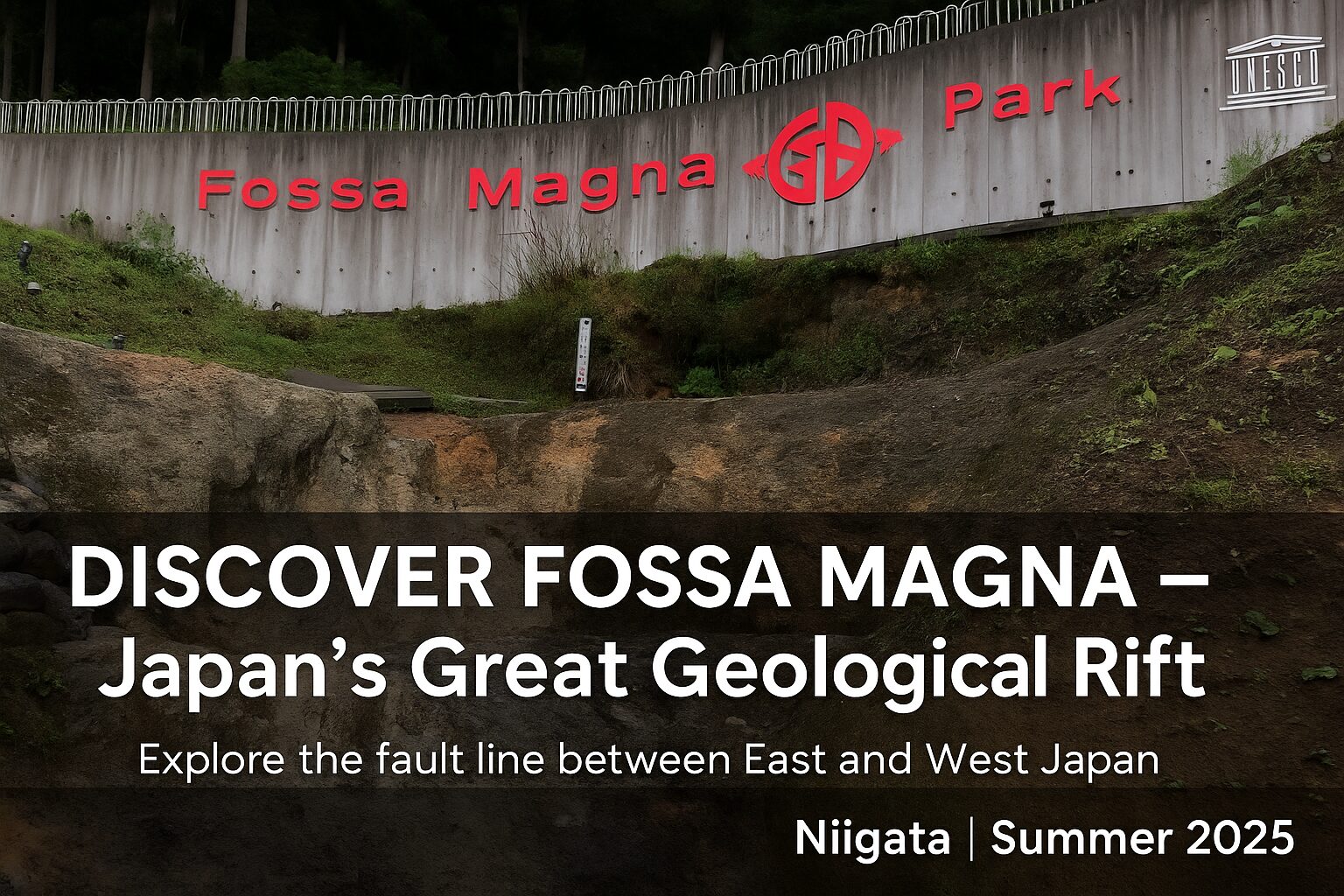
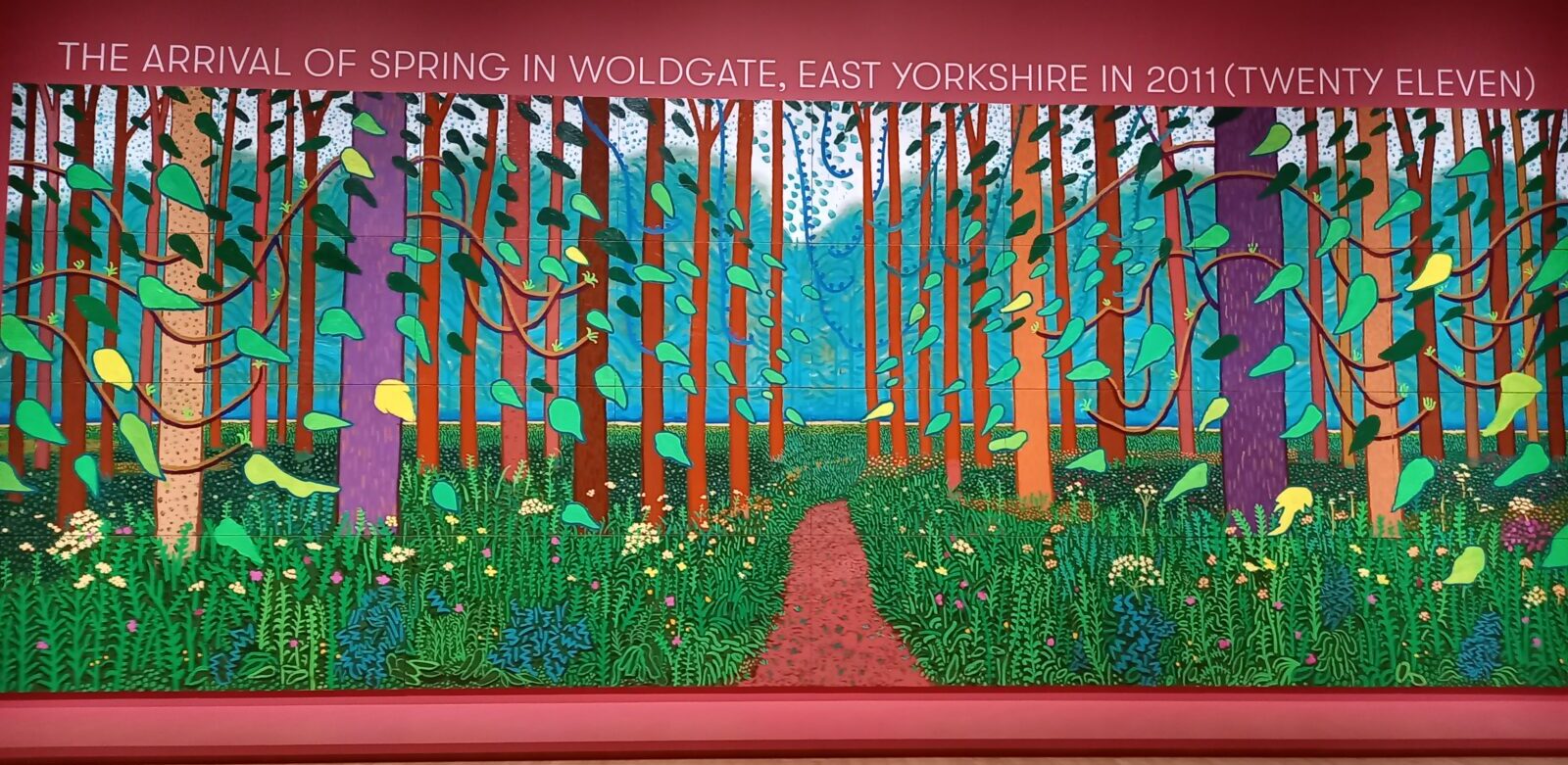
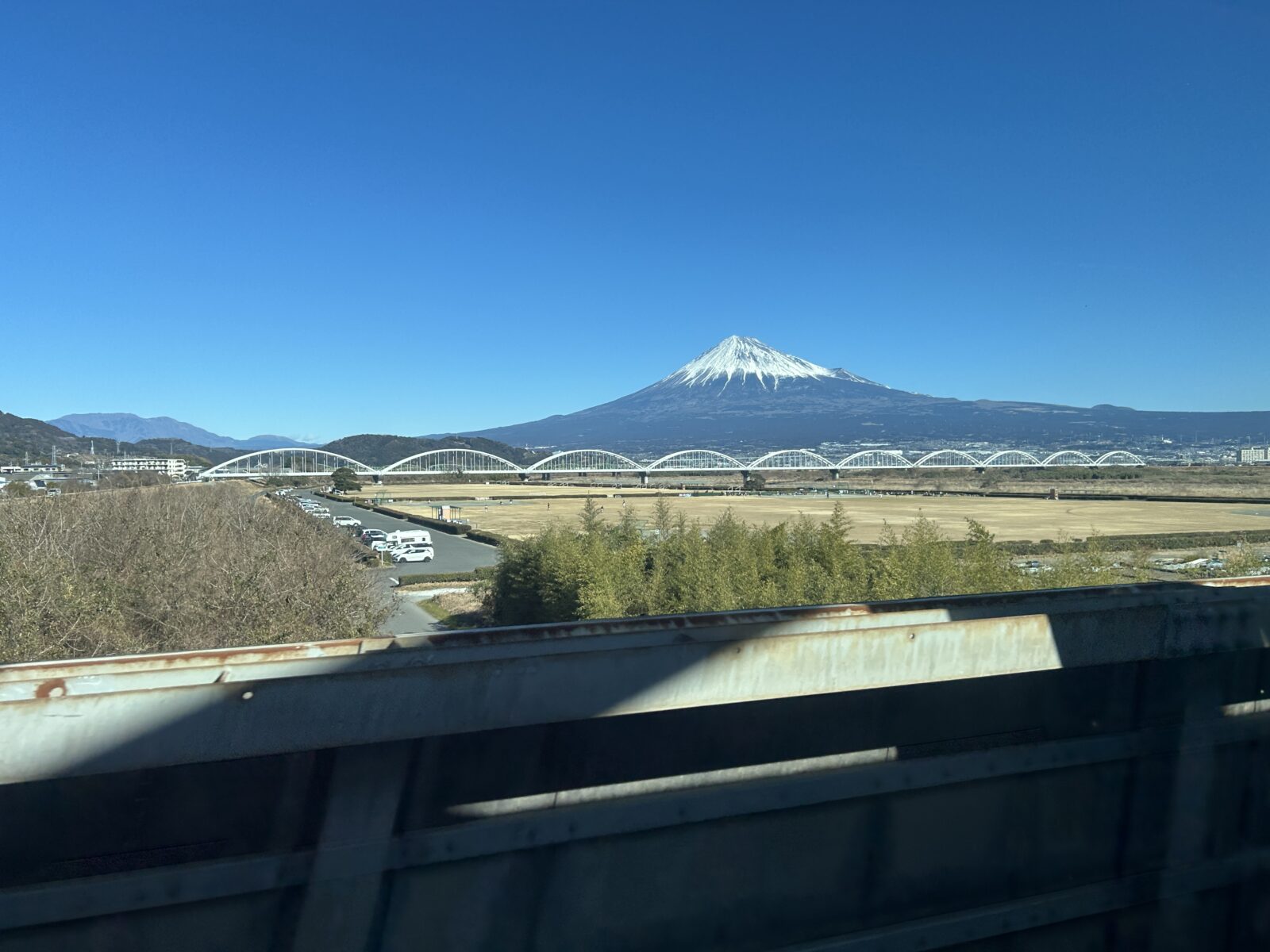
コメント